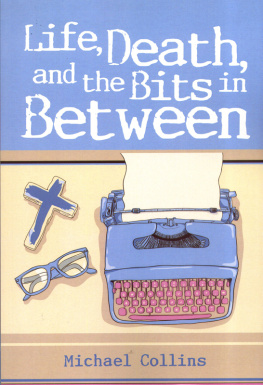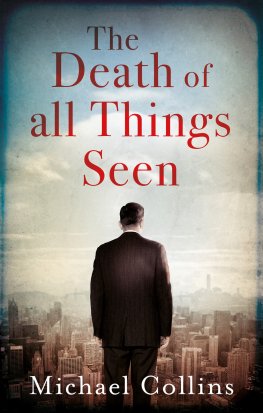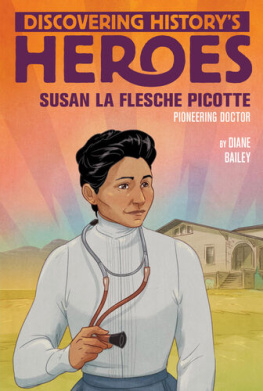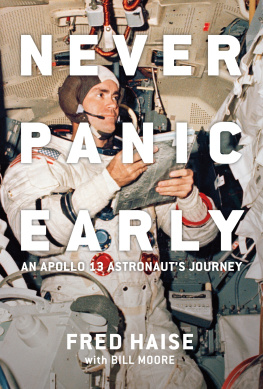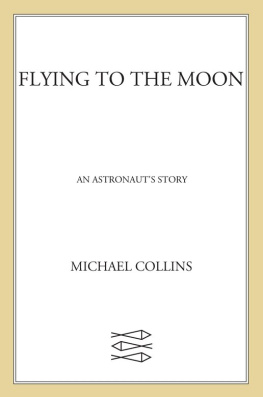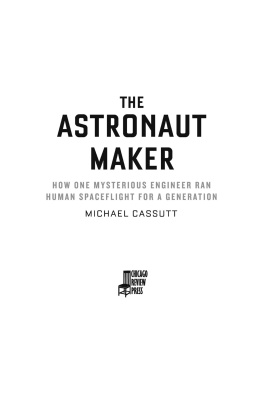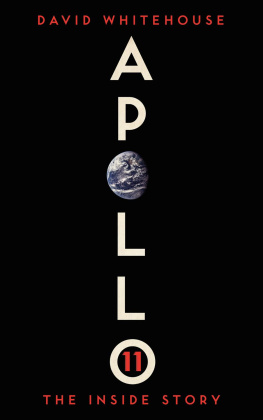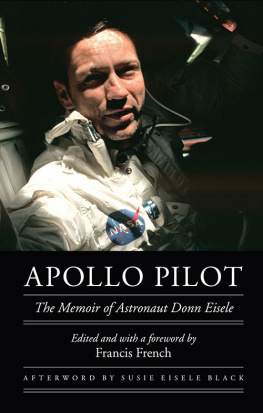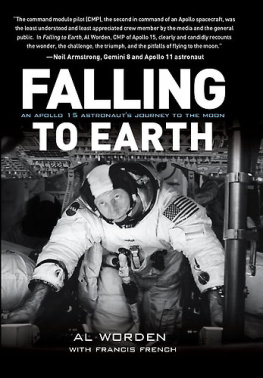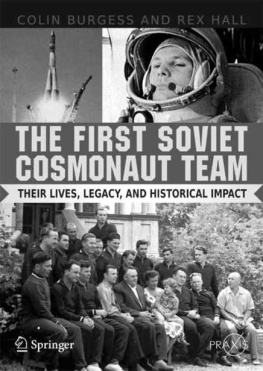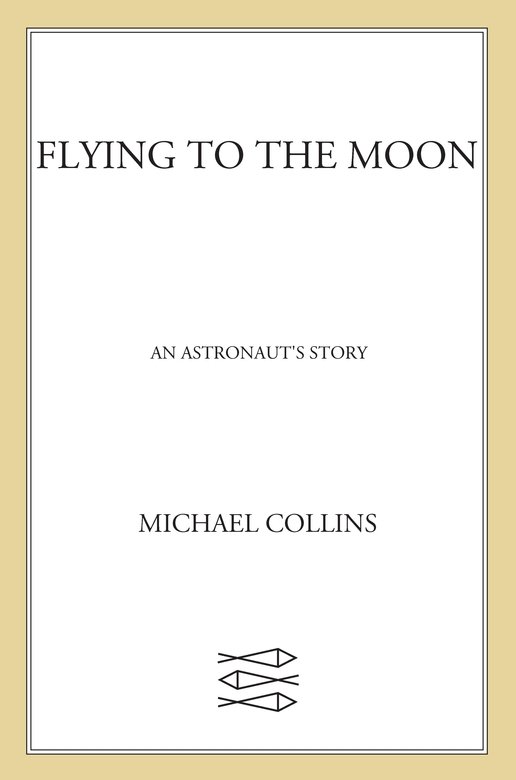E arly on the morning of July 20, 1969, I was circling the moon with Neil Armstrong and Buzz Aldrin in our spacecraft Columbia . We had just awakened from a short sleep and were sucking lukewarm coffee out of plastic tubes and munching on bacon which had been squeezed into little cubes, like lumps of sugar. While we were eating our breakfast, we were talking on the radio with our friends in Mission Control in Houston, Texas. Today was the day Neil and Buzz were going to land on the moon, and Houston was giving them some last-minute advice. Mostly it was technical stuff about their schedule, but all of a sudden they said, watch out for a lovely girlwith a big rabbit. An ancient legend says a beautiful Chinese girl called Chang-O has been living there for four thousand years. It seems she was banished to the moon because she stole the pill of immortality from her husband. You might also look for her companion, a large Chinese rabbit, who is easy to spot since he is always standing on his hind feet in the shade of a cinnamon tree. Of course, our friends in Houston were kidding, because the moon doesnt have any cinnamon trees or even any air for people or rabbits to breathe. They probably just wanted to make us laugh a little bit so we wouldnt be too nervous about landing on the moon for the first time ever.
We were a little nervous that morning. We were concerned about how well our spacecraft and computers would work. We also worried about the rocket blast from Eagle , our lunar module, which might kick up a lot of dust and prevent Neil Armstrong from being able to see well enough to land. Or suppose Neil couldnt find a spot smooth and level enough to put Eagle down? As it turned out, we need not have worried about the moon, because the Eagle landed beautifully in the Sea of Tranquility, and Neil and Buzz were able to walk around and collect some rocks.
The moons surface didnt surprise us, because people had studied the moon very carefully long before Project Apollo came along. In fact, as long as there have been human beings, I suspect that they have wondered about the moon. How far away was it? How big? What was it made of? How could one visit it? It looked like a shining silver plate hanging in the sky, and on a clear night it seemed almost close enough that a cow could jump over it. But really it is far awaynearly a quarter of a million milesfrom earth. Before anyone visited the moon, scientists made very accurate measurements of its distance. How can you tell how far away something is when you havent even been there? There are at least two ways. One is to get two people on different sides of the earth to look at the moon at the same time and measure where it appears with respect to the stars in the background; that is, which stars appear next to it. By comparing what the two observers see, it is possible to measure an anglecalled parallax. Once the parallax angle and the distance between the observers are known, it is possible to draw a triangle and calculate the distance to the moon:

Another way is to bounce a radar signal off the moon and measure the time it takes the signal to travel from the earth to the moon and back again. Since radio waves always travel at the same speed (the speed of light), it is easy to calculate the distance if you know the time. Scientists over the years used both the parallax and the radar methods and got the same answer: 238,000 miles from the earth to the moon. Thats a long, long way, and yet it took Neil and Buzz and me only three days to get there, so you know we must have been traveling pretty fast.
The reason we were able to go so fast is that we started out riding on a rocketa huge rocket taller than a football Held standing on end. As the rockets engines blasted away, we left the earth slowly and then got going faster and faster until finally we had enough speed to overpower the pull of the earths gravity. By this time, the rocket had used all its fuel, so we separated from it and floated to the moon in the weightlessness of space. Of course, huge rockets werent invented until fairly recently, and man has always wanted to go to the moon, so you might guess that there were a number of crazy schemes thought up before the rocket came along. My favorite would-be astronaut was Cyrano de Bergerac, a Frenchman who lived over three hundred years ago. His idea was to get up early in the morning and gather up dew from his garden. He would put the dew into tiny bottles and strap the bottles to his body. Then, when the morning suns heat caused the dew to evaporate, he would float up with itto the moon.
Another famous Frenchman was Jules Verne, who was born about a hundred and fifty years ago. His idea was to shoot a moonship out of a huge cannon, which he called the Columbiad. Verne wrote a fascinating make-believe story about a trip to the moon, and many of his ideas came close to the way the Apollo flights actually took place. For example, as a location for his Columbiad he picked, of all places on earth, Tampa, Floridajust a few miles west of Cape Canaveral, the launching pad for our Columbia .
As I circled the moon in July of 1969, I was thinking about Armstrong and Aldrin, not de Bergerac and Verne. O.K., so we were 238,000 miles from earth, that much Iknew, but what would Neil and Buzz find on the surface? No one had ever been there before, and I was worried, even though we did have a lot of information to help us. Ever since Galileo first peered at the moon through his telescope, nearly four hundred years ago, we had been gathering facts about its pock-marked surface. We had photographs of it, and maps, too. We had crashed into it with our Ranger unmanned spacecraft and even soft-landed a Surveyor spacecraft loaded with instruments. We knew it had no atmosphere and we knew its surface could be either colder than Siberia in January or hotter than the Sahara Desert in August. Whether any one spot on its surface was hot or cold depended on its angle to the sun. The moon does not spin, but keeps one side pointed toward the earth as it makes a gigantic circle around the earth. It takes the moon one month to go around the earth once. In the meantime, the earth is making an even bigger (much bigger) circle around the sun. What all this means is that in a months time a spot on the moons surface will be exposed to every possible condition of lightingfrom inky black to sunlight directly overhead (noon). Months before our flight, scientists had picked a landing spot that looked nice and smooth. Then they figured what time of the month we should arrive at that spot. We wanted Neil and Buzz to be able to see well, with the sun behind them as they descended, and we wanted them not to get too hot, so we decided that landing just after dawn would be best. As you look at the full moon, if you use your imagination you can see the face of the Man in the Moon. Neil and Buzz would be landing just below his left eye. On the day they landed,his left eye was barely visible and his right eye was in darkness. In other words, the people on earth would see slightly less than a half-moon.
Its hard for me to explain exactly what a half-moon is without drawing a picture. Remember that the moon produces no light of its own, but merely bounces back sunlight which hits its surface, so you can tell the direction of the sun by looking at the moon:



